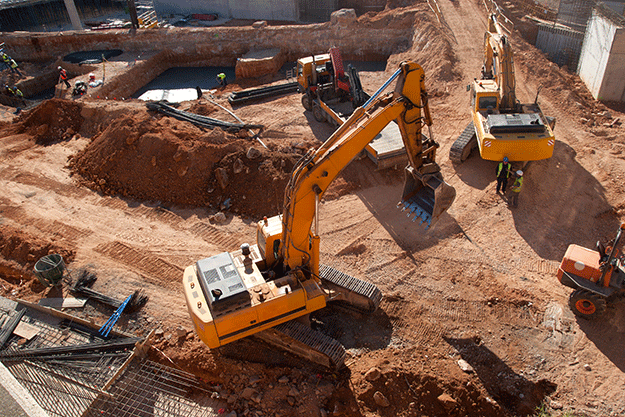
Nothing slows down a construction site or is as detrimental to a workplace as an on-site injury. Not only are on-site accidents unfortunate, but they’re often entirely avoidable.
By taking the necessary measures to ensure your construction site is working to meet and exceed safety standards, you can avoid the tedium of reporting and accounting for these injuries and your staff can rest assured in the knowledge that they are working in a safe, accountable environment. Here are our top tips for preventing the most common construction site injuries so you can have your site working at full productivity, as safely as possible.
What to look out for
By being aware of the most common on-site accidents, and how they are caused, you can put yourself and your site in the best possible position to avoid them entirely. Some common causes of accidents include:
- Trips and falls: Uneven terrain, tripping hazards and conditions that require work to be performed in precarious positions (i.e. on ladders, scaffolding or roofs) come part in parcel with many construction sites. If proper precautions aren’t taken to reduce the chances of trips and falls, accidents can be frequent and major.
- Machinery and vehicle accidents: Operating machinery, and maneuvering vehicles and large trucks around the job site, results in an increased risk of accidents – especially in smaller sites where there isn’t much room to move. Obviously, the greater the activity in a small amount of space, the greater the likelihood of something going wrong – particularly when this activity is caused by multi-tonne machinery.
- Falling objects: Another often-unfortunate by-product of workers having to perform their tasks in precarious positions, such as on scaffolding or ladders, is the increased risk of falling objects. Those workers operating at height may be so focused on the job at hand, that they don’t pay enough attention to what’s happening below them. The damage that can be caused by objects falling from height (no matter what their size) can have major safety implications for the workers down below, as well as repercussions for the job at hand.
- Exhaustion: Anyone who’s worked on a construction site would agree that the job can be physically demanding at times. An unfortunate result of this is worker exhaustion, and the accidents that are caused when workers are tired and not paying enough attention to the job at hand or their surroundings.
Basic safety measures
There are some basic safety measures that don’t take a lot of effort to implement but can make a huge difference to the safety of your job site and the peace of mind of your workers. Some of these include:
- Regular safety meetings: A quick, mandatory safety meeting at the start of every work day helps ensure everyone on the site is on the same page, understands the day’s operations and is aware of any change to the jobsite that might prove hazardous.
- Safety gear standards: Everyone on the construction site, from the top to the bottom of the pyramid should be wearing the proper safety gear, from hard hats to eye protection. Workers on rooftops and scaffolding should always wear harnesses.
- Reflective clothing: Making sure all workers are conforming to high vis clothing standards will go a long way in increasing collective spatial awareness on the construction site, and also ensure workers are easily seen by the drivers of moving vehicles and machinery.
- Regular breaks: To avoid fatigue, make sure your workers take regular breaks and allocate enough time each day to ensure they’re well fed, hydrated and rested.
- Review and observe: Make sure you take time in your day to step back and review and observe how your particular construction site is working. Conducting audits of machinery and equipment might not sound like the most appealing task to a busy construction site manager, but it’s a necessary one and it could potentially save you a lot of time and money in the long term. Observing how your workers are performing their tasks and adhering to safety standards will also help you identify where there is room for improvement or a need for change.
- Implement training and information: Personally understanding the correct standards of safety on a construction site is no help if the information is not shared with the people who are working on the site. By taking the time to implement training measures and educate your workers on the correct safety protocols, you will make everyone accountable in minimising construction accidents in the future.
Additional tips
There are also a few additional measure you can take to ensure your employees are operating in a safe environment, and not putting your business (or most importantly themselves) at risk.
- Make sure you’re keeping a neat and tidy work site devoid of mess and stray tools
- Keep equipment up to date and inform everyone which tools are for which jobs
- Encourage an environment where safety-consciousness is front of mind



